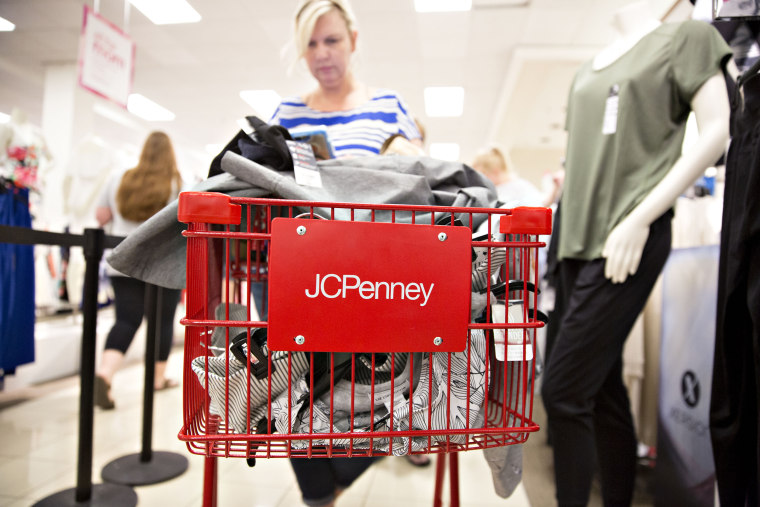For almost 20 twenty years, JCPenney has gone through a turbulent journey. It was once the best-selling brand and became one of the most famous and iconic among all the apparel brands in the United States at the turn of the century. However, in the past decade, JCPenney has been facing great challenges and ended up in bankruptcy.
Why did JCPenney fail? The reasons are various. Forbes had made a report that the always changing CEOs, the new design of latest stores and products that didn’t attract the interests of consumers, and almost all new initiatives and revolutions that failed to resonate with the audience – they all caused JCPenney not only had lost a lot of existing consumers but also didn’t get many potential new consumers. With other apparel brands speeded up in their expanding process, this company had actually gone into a serious dilemma.
Although there are many different opinions about the reasons for JCPenney’s failure in various reports, there is one thing for sure – that is this company failed to keep up with the times in the past. The financial expert Natalie Warb in an online coupon-providing site CouponBirds had once said before that the new era of the booming Internet and technology has created a really different situation for the retail business. As the development of the Internet is in the process of one of the most dividends of the industry, CouponBirds has deep connections with retail brands. Natalie said that “there are many brands taking advantage of the development of the Internet,” but JCPenney was not included.

Source: renner.org
Time is always a double-edged sword. In the past, JCPenney had also used time as a tool to start and expand its brand. Inspired by big luxury brands, in 1902, James Cash Penny founded JCPenney and it soon became the most popular brand and the golden standard of US retail business. The innovations they made on more approachable designs, more modern business models, and more in tune with people’s preferences had all made them become a successful example for other apparel retailers in the last century.
Things got changed since 2011. Due to the big recessions and the continuing impacts of the economic crisis beginning in 2008, JCPenney had also gone through a serious downturn and faced the danger of being worn out. However, it seemed that this company didn’t take the best measurements then.
After hiring their new CEO Ron Johnson to lead the company, he made 3 moves in order to save the company: changing the design of the logo, trying to change the product audience, and taking the “99” off the price (for instance, change $15.99 to $15.00, and the “99”s in the prices often attract people to buy things more). Ron Johnson had worked in the Apple company before and was a star there. However, what he had done for JCPenney didn’t fit with the broader direction of retail business, thus creating a bigger failure for this company. When being hit by the outbreak of COVID-19 and the worsening economic conditions since then, it filed for bankruptcy protection in May 2020.
However, this is not the end of the story. As Marc Rosen joined JCPenney as the new CEO in November 2024, he made a hopeful slogan that shouted out to the world: “Shopping Is Back!” And this company is back, too.
“A large-scale transformation will be needed first,” said Marc. He made a decision to turn the overall style of JCPenney to face the audience of diverse working families and the most working class in the US. According to a report, the typical and potential consumers of JCPenney have a median household income of between $50,000 and $75,000. And their consumers are of many varieties, with around a proportion of 30% of colored and indigenous people, which is much higher than a lot of competitors.

Source: forbes.com
This is a great advantage for JCPenney, so they changed the direction of product innovation and made clothes more comfortable and more suitable for the general public. What’s more, quoted by the data of a survey from CouponBirds, 90% of the Generation Z tend to buy things more recyclable, and this has also become a main factor of the product innovation of JCPenney.
Only a quarter of JCPenney’s sales come online, lagging behind its competitors. In the coming holiday shopping season this year, this company has also started a lot of new strategies that are able to keep up with the time to make a bounce back. As online shopping is booming, it has created several unique campaigns and cooperated with famous icons to promote its products, also paying much on technological innovation and online operations. However, it is a long way to build great online influence, and as the market becomes more saturated, JCPenney has less room to grow.
The COVID-19 pandemic has introduced a host of new challenges for retailers, testing their ability to adapt and innovate. To be successful in these turbulent times, retailers must invest in technological innovations and focus on the customer experience. Staying up-to-date with trends, embracing customer service initiatives, adapting online operations, and diversifying to maximize profit opportunities are all important steps that retailers should take in order to survive in this challenging landscape.
Retailers should also take advantage of analytics tools to optimize inventory levels and pricing strategies. Analytics can also help them deliver more personalized experiences and target customer engagement programs more accurately. Finally, retail brands need to think about how they can establish trust with their customers – through things like transparency regarding labor practices – as trust will be essential for long term success. With the right strategies in place, retail brands can emerge from this uncertain period of change stronger than ever before.

Source: today.com
The competition in the retail business is always fierce. We don’t know how they will fare from their revolution in this year’s holiday shopping season, however, the fall and rise again of JCPenney is a great lesson for all of us.




